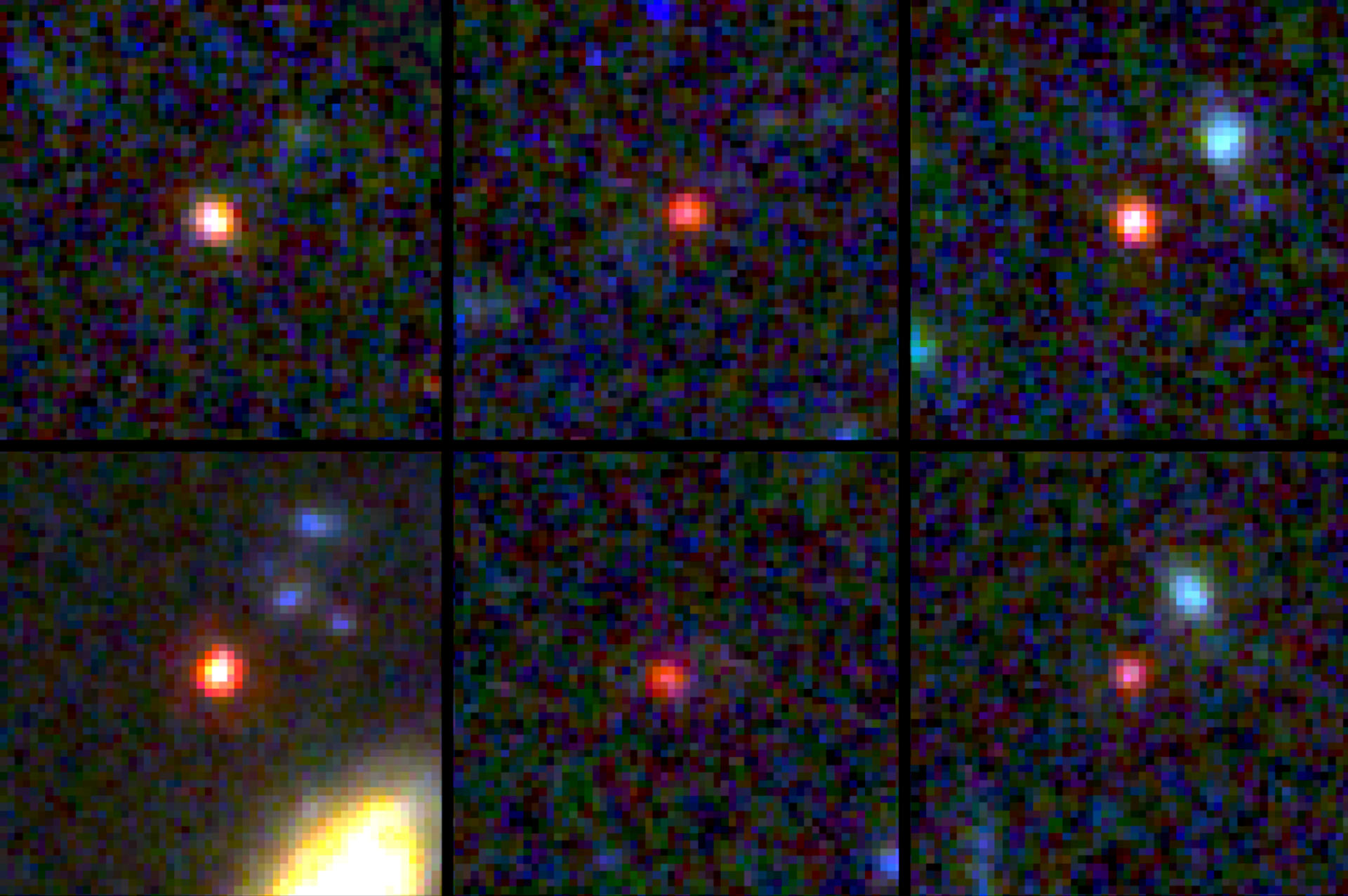Astronomers using the NASA/ESA/CSA James Webb Space Telescope have observed six candidate galaxies with stellar masses as high as 1011 solar masses about 500-700 million years after the Big Bang.
Webb is equipped with infrared-sensing instruments capable of detecting light that was emitted by the most ancient stars and galaxies.
Essentially, the telescope allows astronomers to see back in time roughly 13.5 billion years, near the beginning of the Universe as we know it.
“We expected only to find tiny, young, baby galaxies at this point in time, but we’ve discovered galaxies as mature as our own in what was previously understood to be the dawn of the Universe,” said Dr. Joel Leja, an astronomer at the Pennsylvania State University.
“These objects are way more massive than anyone expected.”
“This is our first glimpse back this far, so it’s important that we keep an open mind about what we are seeing.”
“While the data indicates they are likely galaxies, I think there is a real possibility that a few of these objects turn out to be obscured supermassive black holes.”
“Regardless, the amount of mass we discovered means that the known mass in stars at this period of our Universe is up to 100 times greater than we had previously thought. Even if we cut the sample in half, this is still an astounding change.”
The six massive galaxies were identified in the first observations of the JWST Cosmic Evolution Early Release Science (CEERS) program.
This program obtained multi-band images with Webb’s Near Infrared Camera (NIRCam) in a ‘blank’ field, chosen to overlap with existing Hubble imaging.
“We’ve never observed galaxies of this colossal size, this early on after the Big Bang,” said Dr. Ivo Labbé, an astronomer at Swinburne University of Technology.
“The six galaxies we found are more than 12 billion years old, only 500 to 700 million years after the Big Bang, reaching sizes up to 100 billion times the mass of our Sun. This is too big to even exist within current models.”
“This discovery could transform our understanding of how the earliest galaxies in our Universe formed.”
Follow up measurements are being carried out to confirm the galaxies and rule out alternative explanations.
“One alternative, equally fascinating, is that some of the objects belong to a new class of emerging supermassive black holes, never seen before,” Dr. Labbé said.
One way to confirm the team’s finding and alleviate any remaining concerns would be to take a spectrum image of the massive galaxies.
That would provide the authors data on the true distances, and also the gasses and other elements that made up the galaxies.
They could then use the data to model a clearer of picture of what the galaxies looked like, and how massive they truly were.
“A spectrum will immediately tell us whether or not these things are real,” Dr. Leja said.
“It will show us how big they are, how far away they are. What’s funny is we have all these things we hope to learn from Webb and this was nowhere near the top of the list.”
“We’ve found something we never thought to ask the Universe — and it happened way faster than I thought, but here we are.”
Sources:
I. Labbé et al. A population of red candidate massive galaxies ~600 Myr after the Big Bang. Nature, published online February 22, 2023; doi: 10.1038/s41586-023-05786-2








%20has%20found%20more%20than%201,000%20galaxies%20mysteriously%20resembling%20our%20own%20Milky%20Way%20hiding%20out%20in%20the%20early%20universe..jpg)







